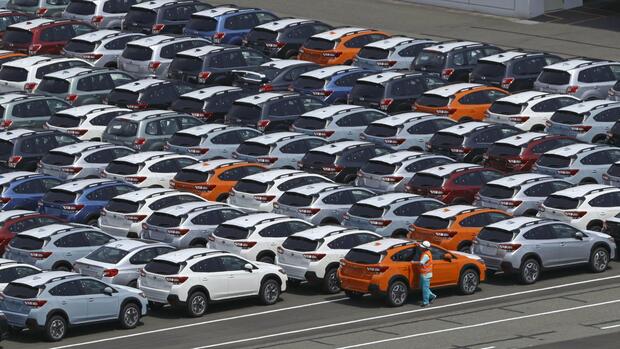German exports to the USA fell by 3.6 percent.
(Photo: dpa)
Berlin The weakening demand for German export goods threatens to prolong the recession in Germany. German exports surprisingly fell in May due to falling demand from the EU and the USA. They fell by 0.1 percent compared to the previous month to 130.5 billion euros, as the Federal Statistical Office announced on Tuesday.
Economists surveyed by Reuters, on the other hand, had expected growth of 0.3 percent. Compared to May 2022, the decline was even more pronounced at 0.7 percent.
“Unfortunately, there was no spring awakening in the export industry,” said Volker Treier, head of foreign trade at the Association of German Chambers of Industry and Commerce (DIHK). “Persistently high inflation rates and higher interest rates in many markets are dampening foreign business.” Imports, on the other hand, increased by 1.7 percent to 116.1 billion euros.
In view of the falling international demand for goods “Made in Germany”, economists doubted whether Europe’s largest economy would be able to end its recession quickly. “But this once again confirms the suspicion that nothing will come of an economic recovery for the time being,” commented the chief economist at VP Bank, Thomas Gitzel, on the flagging export business.
Europe’s largest economy has recently shrunk for two quarters in a row. The main reason was the reluctance to buy on the part of consumers suffering from falling real incomes.
The USA remain the number one buyer country
“Declining impulses from the USA are particularly important,” commented the chief economist at Hauck Aufhäuser Lampe Privatbank AG, Alexander Krüger, on the negative development in exports. “As of now, the export sector will record another quarterly minus.”
Exports to the EU countries fell in May by 1.5 percent on the previous month to 70.3 billion euros. The USA remained the number one buyer country: Goods worth 12.7 billion euros were sold there, a drop of 3.6 percent.
Exports to China, on the other hand, grew by 1.6 percent to 8.6 billion euros, those to Great Britain even increased by 5.8 percent to 6.4 billion euros. Exports to Russia fell by 7.4 percent to 0.7 billion euros because of western sanctions as a result of the war against Ukraine. “Mixed economic developments in the EU, the USA and China, among others, are weakening the global economy and foreign demand,” said DIHK expert Treier.
Analysts expect nothing to change for the time being. “In the near future, the ongoing weakening of export orders, the expected slowdown in the US economy, high inflation and the great uncertainty will leave their mark on German exports,” said ING chief economist Carsten Brzeski. The current development confirms “that sluggish exports are no longer the exception, but the new normal”.
Interest rate hikes dampen demand for German products
From January to May, German exports totaled 659.3 billion euros, an increase of 4.5 percent compared to the same period last year. However, exporters are facing a difficult second half of the year.
The barometer for expectations in the export industry fell to minus 5.6 points in June, after plus 1.0 point in May. This is the lowest value since November 2022, as the Munich Ifo Institute announced in its monthly company survey.
“In addition to the weak domestic demand, there are now even fewer orders from abroad,” said Klaus Wohlrabe, head of the Ifo surveys. “This is not good news for the German export economy.” The worldwide interest rate increases dampened the demand for goods “Made in Germany”. The order cushion is getting thinner and thinner.
More: Where Germany is most dependent on China
